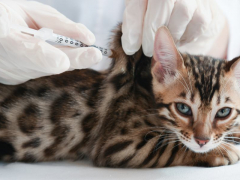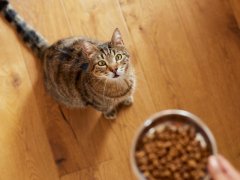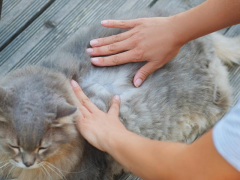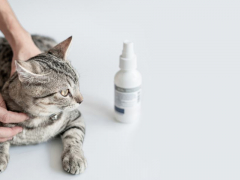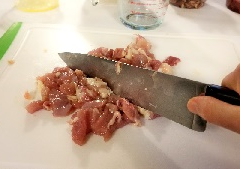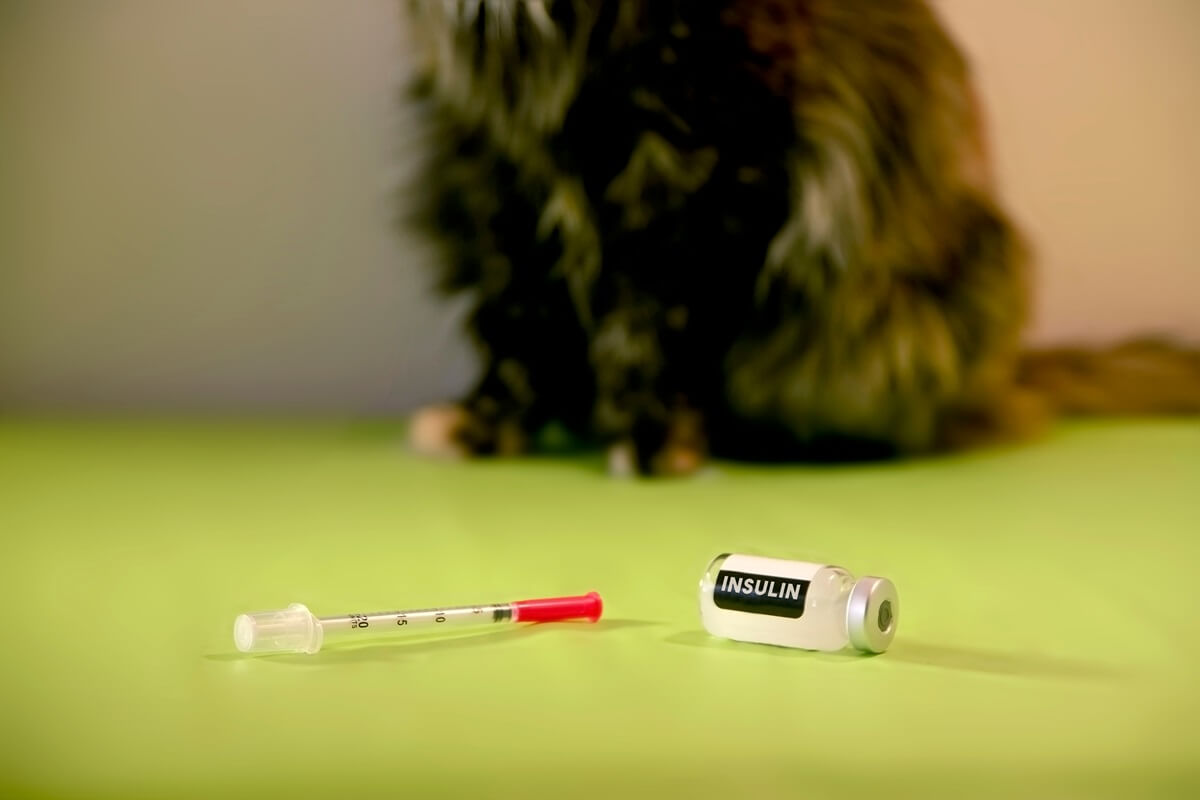
Insulin is the main treatment for cats with diabetes mellitus. ecbphotos / Shutterstock.com
Insulin is the main treatment for diabetes mellitus in cats. Insulin is given by injection—usually twice daily—under the skin, using a thin needle or a special VetPen. While giving your cats injections can seem daunting, most cats and their owners get used to it quickly and can give it at home. Insulin works by reducing the high levels of glucose in your cat’s blood.
Diabetes can be overwhelming when your cat is first diagnosed, but with successful treatment, many cats go on to live full and happy lives. If diabetes is caught early, some cats can even go into remission—meaning they no longer need any medication.
Read on for everything you need to know about insulin for cats, from how it works to what types are available and how to use them.
How Does Insulin for Cats Work?
Insulin is a hormone made naturally in the body. Insulin regulates blood sugar levels and allows the body to use the energy in food. Insulin is released when sugar levels become high in the bloodstream (such as after a meal). This causes the glucose to move out of the bloodstream and into the cells to be used for energy.
Diabetes mellitus occurs when either your cat’s pancreas is not producing insulin (type 1), or the cells in the body are not responding to it (type 2). Type 2 diabetes is the most common form of diabetes in cats. Over time, persistently high blood sugar levels (hyperglycemia) can cause cats to become very unwell. For an in-depth explanation of diabetes in cats, read Diabetes in Cats: Causes, Symptoms, and Treatment.
Insulin therapy works by replacing the job of naturally occurring insulin in the body, either because it isn’t being made or it isn’t working well. Normally, insulin is released in small amounts throughout the day whenever your cat’s blood sugar levels increase. However, the insulin medication we give cats is medium to long-acting. This means we can administer it twice daily and it will work throughout the day to keep the cat’s blood glucose in the normal range.
The goals of treating diabetic cats with insulin are to:
- Find a treatment regime that works for both the cat and their owner
- Reduce or resolve the cat’s symptoms of diabetes
- Keep the cat’s blood glucose levels within the normal range
- Avoid dangerously high or low blood sugar levels
- Ideally, achieve complete diabetic remission
Remission in Cats With Diabetes
In some cases, early and successful treatment with insulin might allow your cat to go into remission. This is where your cat returns to maintaining normal blood glucose levels without insulin treatment. Remission is most likely to be achieved in newly diagnosed cats (that are diabetic for less than six months) alongside dietary changes and weight management. To have the best chance of remission, insulin treatment should keep their blood glucose in the normal range for as many hours as possible each day.
Remission is the ideal goal of insulin therapy, but it is important to know that a quarter to a third of cats that go into remission will relapse again and still require long-term insulin treatment.
Types of Insulin for Cats
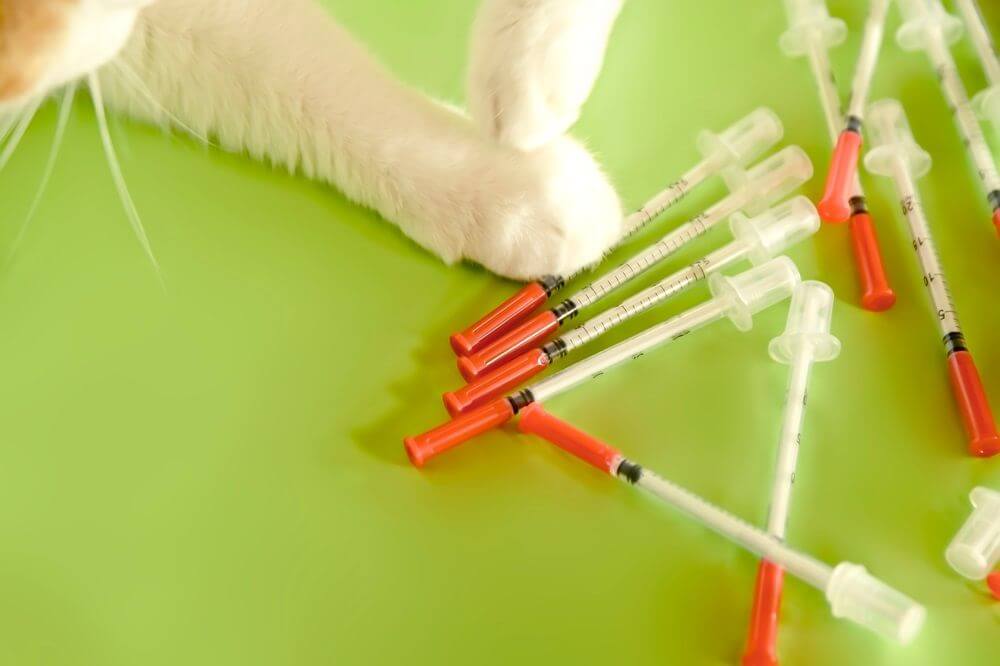
Several types of insulin are used to treat diabetes in cats. ecbphotos / Shutterstock.com
Some cats are already seriously unwell when they are first diagnosed with diabetes. They often need hospitalization and short-acting insulin known as soluble insulin. This is usually given into their vein or muscle frequently to stabilize their blood sugar levels as quickly as possible.
However, stable cats are started on insoluble insulin for long-term management. There are several different types of insulin available for cats. The choice will depend on availability in each country, cost, and veterinarian’s familiarity with the drug. The four most commonly used insulin preparations for long-term use in diabetic cats are:
- Porcine lente insulin (Vetsulin in the United States, Caninsulin in Europe)
- Protamine zinc insulin (ProZinc)
- Glargine (Lantus)
- Detemir (Levemir)
These are all given twice daily, via an injection under the skin, and are medium to long-acting.
The choice of insulin can influence your cat’s chance of going into remission. Glargine and detemir have the highest reported success rate of remission (up to 80%) in newly diagnosed diabetic cats. However, neither of these is licensed for use in cats, and in some countries (such as the United Kingdom), prescribing laws might preclude their use as a first-choice option.
The type of insulin plays a role, but it is important to remember that other management strategies, such as diet and weight loss are just as important.
Porcine Lente Insulin
| Drug Name | Porcine Lente Insulin |
| Trade Name | Caninsulin (Europe), Vetsulin (United States); MSD Animal Health |
| Length of Action | Intermediate (8 to 10 hours) |
| Concentration | 40 U/mL |
| Starting Dose | 1 to 2 IU twice daily using either a syringe or VetPen |
Porcine lente insulin is licensed worldwide as a twice-daily treatment for diabetes in dogs and cats. However, the average length of action in cats is only eight hours, meaning most cats will suffer from high blood glucose for a few hours each day, even with twice daily dosing. So, to have the best chance of remission, many veterinarians will choose a longer-acting choice of insulin.
Nonetheless, a study on the treatment of 46 cats with porcine lente insulin found that it provided good to excellent control in 72% of cats, with 15% going into remission within 20 weeks.
Vetsulin and Caninsulin can be given with a specially designed VetPen, which some owners find easier than a needle and syringe. However, currently, porcine lente insulin is only available in Europe and Canada (under the trade name Caninsulin), having been withdrawn from the U.S. market.
Protamine Zinc Insulin (PZI)
| Drug Name | Protamine Zinc Insulin (PZI) |
| Trade Name | ProZinc (Boehringer-Ingelheim) |
| Length of Action | Long (13 to 24 hours) |
| Concentration | 40 U/mL |
| Starting Dose | 0.2 to 0.4 IU/kg every 12 hours |
Due to its greater length of action and better market availability compared to porcine lente insulin, PZI is a common first choice for diabetic cats in the United States. It is licensed specifically for cats, and administered every 12 hours, via an injection under the skin.
The starting dose depends on the severity of your cat’s symptoms and their level of hyperglycemia. One study assessing the efficacy of protamine zinc recombinant human insulin for treatment of diabetes mellitus in cats found that 85% achieved good control within 45 days. Remission rates are similar to porcine lente insulin.
Glargine
| Drug Name | Glargine |
| Trade Name | Lantus (Sanofi) |
| Length of Action | Long (12 to 24 hours) |
| Concentration | 100 U/mL |
| Starting Dose | 0.25 to 0.5 IU/kg body weight every 12 hours |
Glargine is an insulin intended for use in people and it is not licensed for cats. However, it is commonly used “off-label” using a prescription from your veterinarian. It is one of the more expensive options, but prices can vary between pharmacies, so it can be worth shopping around.
Glargine is said to achieve the highest levels of remission of the insulins available, however, many of the studies are small and hard to draw firm conclusions from. One small study found that treatment of newly diagnosed diabetic cats with glargine results in a higher probability of remission than protamine zinc and lente insulins, with remission in 8/8 cats within 16 weeks, compared to 2/8 and 3/8 in PZI and lente insulin respectively.
Another study of 55 cats treated with glargine achieved a remission rate of 84%. However, a more recent year-long study entitled “Comparing the efficacy of glargine and protamine zinc insulin in diabetic cats” (not available online) found similar rates of 33.3% and 23% respectively.
Due to its long duration of action, glargine can be given once daily. However, most veterinarians recommend it be given twice daily for the best chance of remission.
Detemir
| Drug Name | Detemir |
| Trade Name | Levemir |
| Length of Action | Long (12 to 24 hours) |
| Concentration | 100 U/mL |
| Starting Dose | 0.25 to 0.5 IU/kg twice daily |
Detemir is another insulin licensed for use in humans, but commonly used successfully in cats. It is very similar in chemical composition to glargine and has achieved similar remission rates in studies. In a small 2012 study looking at the use of detemir in diabetic cats, 81% of cats treated within six months of being diagnosed went into remission, compared to 42% of cats that had been diabetic for longer than six months. Overall, the remission rate was 67%, similar to glargine.
How to Administer Insulin to Cats
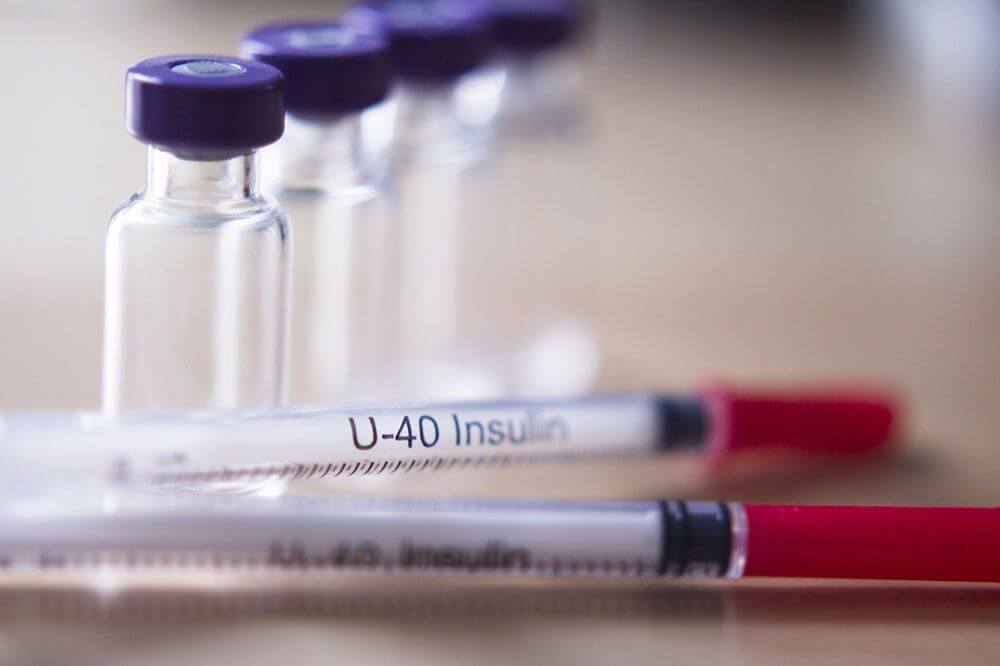
It’s vital to use the right sized syringe for the concentration of insulin your cat is receiving. GemaIbarra / Shutterstock.com
Insulin comes in a liquid form, in small glass vials. Each type of insulin has different storage requirements, so read the information on the package insert. Importantly, the insulins licensed for veterinary use (Caninsulin/Vetsulin and ProZinc) come in a less concentrated form of 40 U/ml, compared to the human preparations which are 100 U/ml. It is vital to give 40 U/ml insulin with U40 syringes (or the manufacturer’s dosing pen) to avoid a serious error in dosage.
Insulin is given as an injection under your cat’s skin—called a subcutaneous injection.
A Step-By-Step Guide to Injecting Insulin for Your Cat at Home
- Follow the manufacturer’s advice on whether to roll or shake the insulin to mix it before use.
- Remove the cap from the needle carefully.
- Insert the needle into the top of the vial.
- Turn the vial upside down and draw the correct amount of insulin into the syringe. Check for air bubbles, and if present, flick the side of the syringe until they rise to the top. Push them out with the plunger and re-draw up the correct amount of insulin.
- Remove the needle from the vial carefully, ensuring you do not accidentally hurt yourself.
- Pinch a triangle of skin between your cat’s shoulder blades using your thumb and first two fingers to create a space under the skin.
- Insert the needle through the skin into the space under the skin.
- Draw back the plunger to check that no blood or air is entering the syringe. If you see blood or air, remove the needle and try again in a different location.
- If there is no blood or air, then press the plunger to inject the full dose.
- Remove the needle and check your cat’s fur for any wet patches, which means the needle went all the way through the skin.
If you choose to use a VetPen to administer your cat’s insulin, read the manufacturer’s guidelines for exactly how to administer it. Whether you are using a syringe or a VetPen, you must be very careful to avoid self-injection. If you do accidentally inject yourself with insulin, contact your doctor immediately.
Tips for Managing Insulin Injections at Home
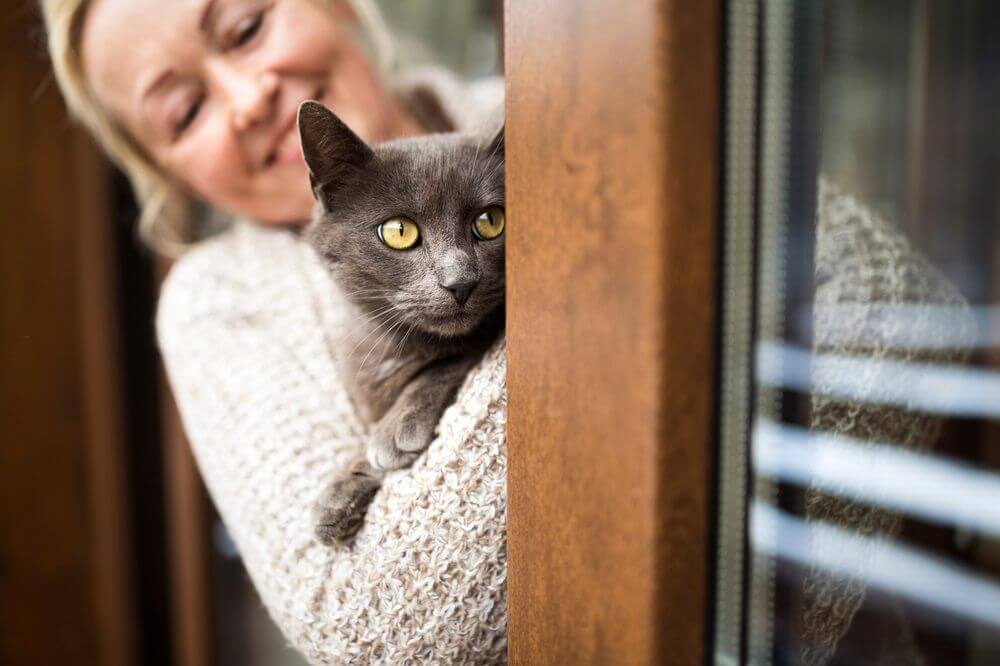
Although it can be daunting at first, most owners and their cats quickly get used to insulin injections. Halfpoint / Shutterstock.com
Most cats cope with insulin injections better than you think, as the needle is very thin—some cats hardly seem to notice it. Cats also have very loose skin between the shoulder blades, which makes the injections more comfortable for cats than they are for people. Here are some tips you can use to help both you and your cat:
- Practice with water and a piece of fruit: You can master the technique using a syringe of water and a piece of fruit before moving on to your cat.
- Ask your veterinary team to clip the hair around the injection site: This makes it easier to see that the needle has gone into the right place, and has not come out the other side.
- Vary the injection location: This will make the injection more comfortable for your cat and reduce inflammation in the skin. Just make sure it is an area with loose skin.
What to Do if Your Cat Misses a Dose of Insulin
Although quick and successful treatment of diabetes is important, giving too much insulin is much more dangerous than missing a dose. So, if you are unsure if you have given a dose, or think you have given a reduced dose (for instance, if some may have gone through the skin and onto the fur) it is safest not to repeat the injection. Just wait until the next time it is due and give a full dose as normal.
What to Do if Your Cat Does Not Eat Their Meal or Vomits
Your cat’s usual insulin dose is based on their usual food intake, which will cause the blood glucose levels to rise. If they have not eaten or if they vomit their food, do not give them insulin—it might cause their blood glucose level to become too low. Instead, call your veterinarian for advice. They may advise skipping the dose or giving a reduced dose.
Monitoring Cats Receiving Insulin
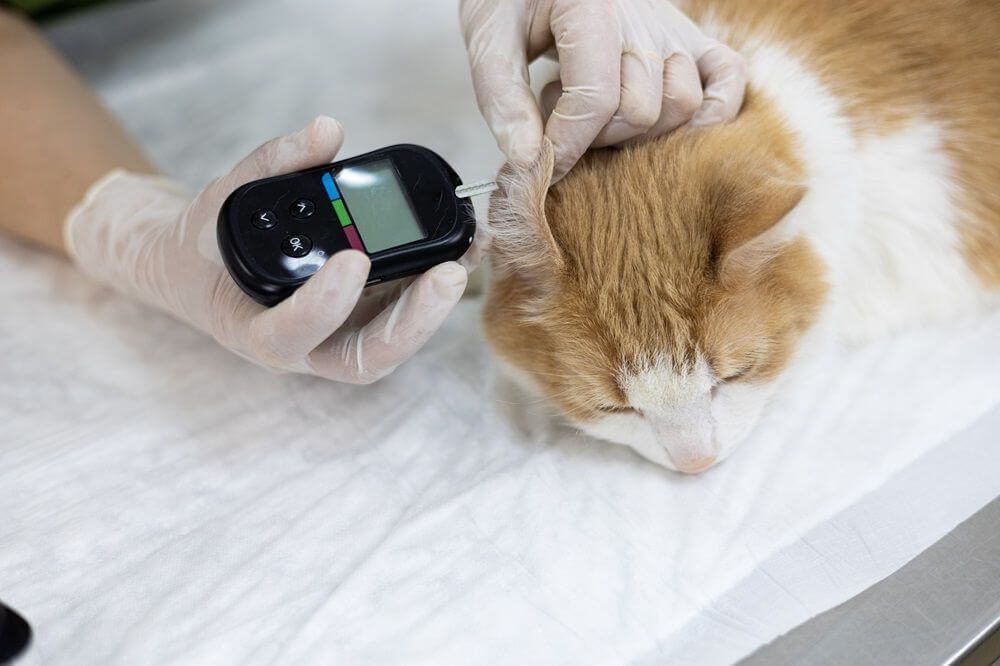
Your veterinarian might check your cat’s blood glucose level by making a prick inside their ear, and testing the blood with a machine called a glucometer. Lebedko Inna / Shutterstock.com
When cats are first diagnosed with diabetes, they will be started on a low dose of insulin. This is because low blood glucose (hypoglycemia) is more dangerous short term than high blood glucose. Your veterinarian will closely monitor their response to the insulin, making gradual dose increases no more than every three to five days.
Monitoring will include a “glucose curve” to check the sugar level in your cat’s blood regularly throughout the day. This will let your veterinarian know if it goes too high or low at any point, and how many hours of the day it is within a normal range.
The types of monitoring your vet might do include:
- Glucose curves in the hospital
- Glucose curves at home
- Fructosamine blood test
- Urine samples
How your cat acts at home is also a key part of monitoring their response to the treatment. Look out for changes in:
- Drinking habits
- Urinating
- Appetite
- Demeanor
- Weight and body condition score
Once your cat is receiving the correct dose of insulin, one of the first improvements you notice is that they begin to drink and urinate in normal amounts. They also tend to be much brighter in themselves. Unstable diabetic cats often have a ravenous appetite, so this should settle down again. Over several weeks, cats that have lost weight should regain a healthy body condition score.
If your cat was overweight when they were diagnosed your veterinary team will help you manage their diet during their recovery.
Signs of Not Enough Insulin
If your cat is not receiving a high enough dose of insulin, you’ll find that their symptoms are not resolving. For instance, they might still be drinking and urinating frequently, with a ravenous appetite. They will also be at risk of developing complications, such as diabetic ketoacidosis. Your veterinarian will use a combination of tests and monitoring of their symptoms to assess the safest way to increase their dose.
However, it takes time to stabilize a cat with diabetes, and it is much less risky to increase the dose too gradually than too quickly.
Signs of Insulin Overdose
The most important thing to know when starting your cat on insulin is how to spot signs of low blood sugar levels, called hypoglycemia. This can happen if your cat receives too much insulin.
Signs of low blood glucose in cats include:
- Weakness
- Lethargy
- Anorexia
- Lack of coordination
- Poor responsiveness
- Vomiting
- Trembling
- Seizures
- Coma
Hypoglycemia can be life-threatening. Administer an oral glucose gel (or a sugary food like honey) to their gums immediately if your cat shows signs of hypoglycemia and call your veterinarian.
For a detailed explanation of monitoring in diabetic cats, read Diabetes in Cats: Causes, Symptoms, and Treatment.
-
Michiels, L., Reusch, C. E., Boari, A., et al. (2008). Treatment of 46 cats with porcine lente insulin—a prospective, multicentre study. Journal of Feline Medicine and Surgery, 10(5), 439–451. https://doi.org/10.1016/j.jfms.2007.10.013
-
Roomp, K., & Rand, J. (2012). Evaluation of detemir in diabetic cats managed with a protocol for intensive blood glucose control. Journal of Feline Medicine and Surgery, 14(8), 566–572. https://doi.org/10.1177/1098612x12446211
-
Roomp, K., & Rand, J. (2009). Intensive Blood Glucose Control is Safe and Effective in Diabetic Cats Using Home Monitoring and Treatment with Glargine. Journal of Feline Medicine and Surgery, 11(8), 668–682. https://doi.org/10.1016/j.jfms.2009.04.010
-
Gostelow R, Scudder C, Hazuchova K, et al. (2017). ACVIM Forum. MD: National Harbor; 2017. One-Year Prospective Randomized Trial Comparing Efficacy of Glargine and Protamine Zinc Insulin in Diabetic Cats. [Abstract] p. 1273
-
Martin, G. J., & Rand, J. S. (2007). Control of diabetes mellitus in cats with porcine insulin zinc suspension. Veterinary Record, 161(3), 88–93. https://doi.org/10.1136/vr.161.3.88
-
Top 5 Maintenance Insulins. (2023, February 28).
-
Sparkes, A. H., Cannon, M., et al. (2015). ISFM Consensus Guidelines on the Practical Management of Diabetes Mellitus in Cats. Journal of Feline Medicine and Surgery, 17(3), 235–250. https://doi.org/10.1177/1098612x15571880
-
Fundamentals for Today’s Insulin Therapy. (2022, February 18). Today’s Veterinary Practice.
